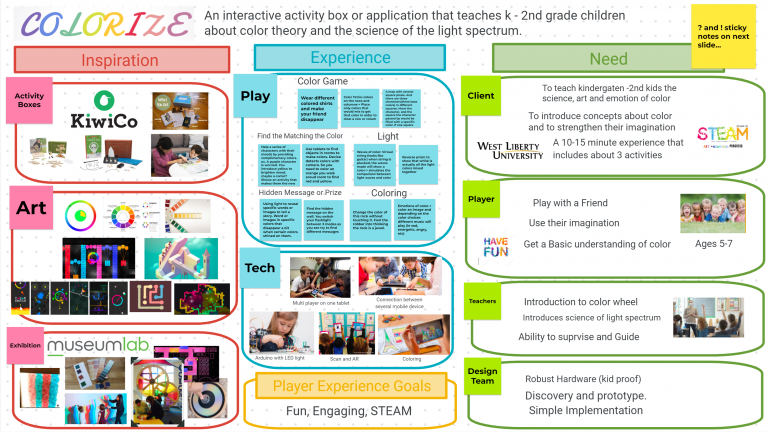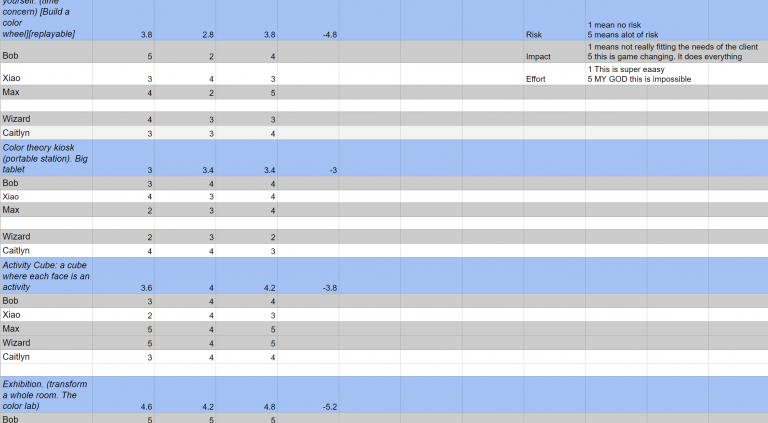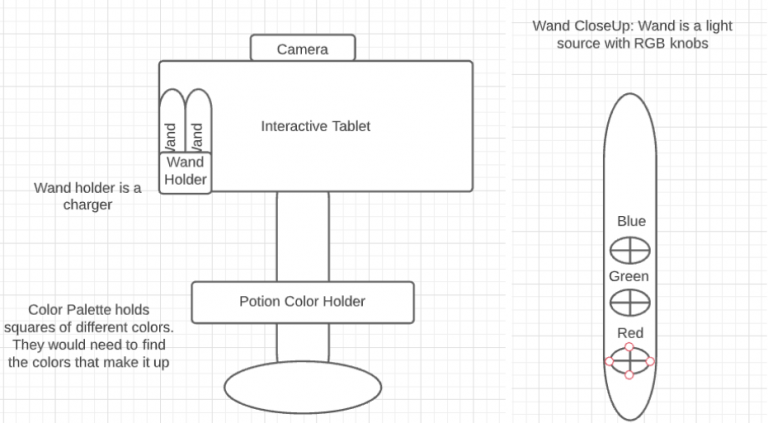Introduction
This week we spent most of our time researching and solidifying our ideas. Since the project kicked off, we have made a composition box, and we have received feedback from faculty and peers. We wanted to use their feedback as inspiration for further research. A lot of the discussion this week is around the question: what is the final product? To answer this question, the team has proposed several ideas, and eventually we narrowed them down to two and presented them to our client.


What is the final product?
Last week the team narrowed 50 ideas down to 29 ideas that belong to several big categories. This week we are trying to decide how to incorporate several of these ideas into one final product. The team has considered several factors:
- What are the team members excited about? robust hardware, cooperative activity
- What the client wants and needs? replayability, being able to let teachers supervise
- What are the metrics of success?
The team members have come up with several potential final products. The team did a risk analysis and narrowed them down to 2 directions:
- An activity cube
- A Kiosk

An activity cube (drawn and designed by Caitlyn Lenhoff)
A wooden cube integrated with lights and other technology where the faces are separate multiplayer/solo activities that teach color theory such as color mixing, light waves, and the color wheel.

Kiosk (Drafted by Ebrahim Karam)
An interactive kiosk with a touch screen that gives options for three activities: wand coloring, interactive color wheel, potion color mixing as they use wands and potions.

Related Research
Based on the feedback, we have further looked into some related works and topics. Each team member focused on an aspect to look further into.
- Montessori educational model
- Cas Holman
- How to get children 5 to 8 engaged
- Color and Emotion
- Resources: Carnegie Library, Assemble, etc
Client Meeting
On Friday we presented our two ideas to our client, Lou Karas, and graduate students, Lisa McGee and Katie Nelson. They liked both our ideas, but they were more enthusiastic about the activity cube, as they have already had interactable tablets in the classroom. They have also made some suggestions on what materials and what power source we should use. They would like the cube to sit on a table for kids to use. Ideally, the cube is heavy and stable enough that kids can’t move it around, but the teachers can move it without difficulty. Lou proposed that the cube can sit on a lazy susan so that kids can easily interact with different activities.
Looking into Next Week
- ¼ Walkarounds presentation
- Receive and process feedback from faculty
- Start prototyping
- Schedule early playtesting opportunities
